- Details
- Written by Josh Baakko
- Category: Painting Projects
- Hits: 5697
Painting a Plastic Deck to Look Like Aged Wood
The age old dilemma. How to get that wood deck on your beautifully detailed and weathered flat car, to look like real aged wood. I recently painted several wood deck cars and decided I needed to document my process.
This amazing Tangent flat car comes accurately detailed out of the box. I weathered mine lightly a few years back, but never addressed the deck. It's been waiting for me to finish it properly ever since.
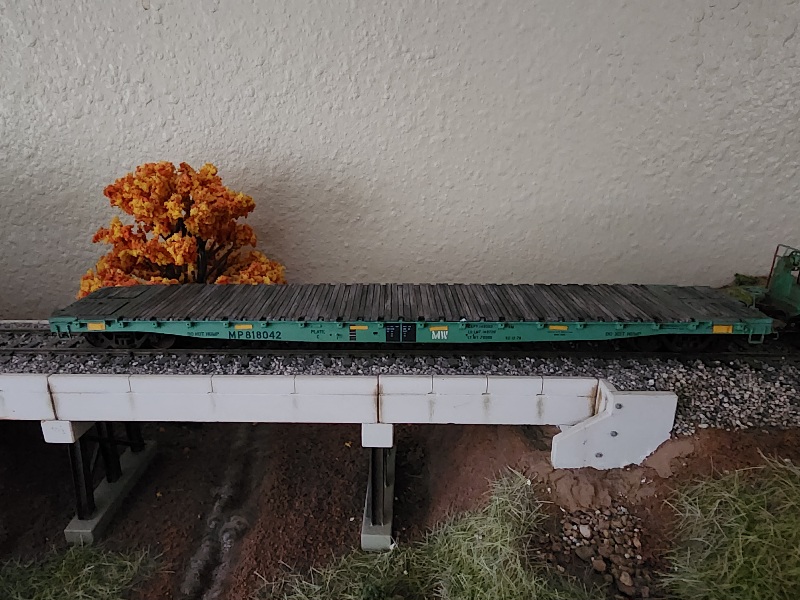
- Details
- Written by Pat Durand
- Category: Painting Projects
- Hits: 2436
Pat Durand's Masking Tips
Article reposted by the generous authorization of Pat Durand's son Casey.
If you want Alaska Railroad engines someone will have to paint them. You may as well jump in. Here are some proven tips that may save you some grief along the way.
Gather tools and resources needed in a well lighted, clean work area. Sharp scissors, fresh razor blade, tweezers, Scotch Magic Mending tape, and a clean sheet of paper. Photos of the prototype and a previous successful model if you have one are a must.
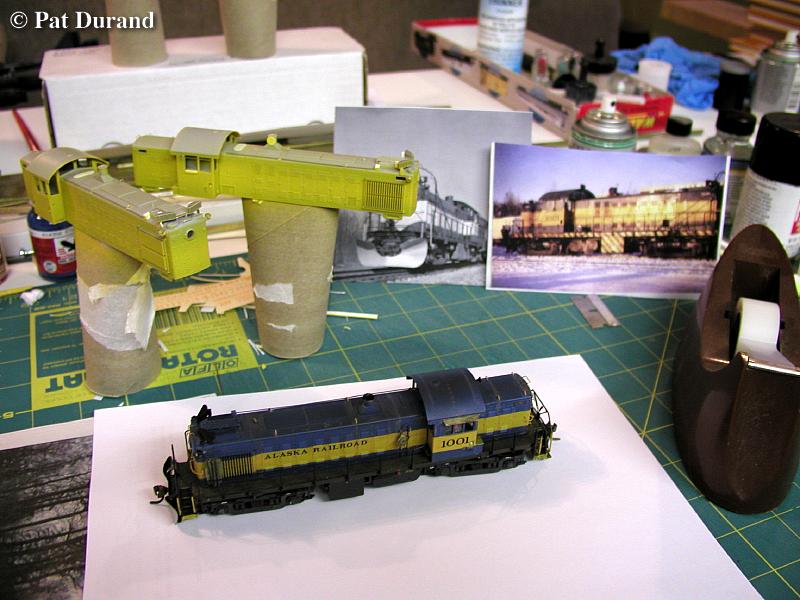
- Details
- Written by Josh Baakko
- Category: Painting Projects
- Hits: 3364
Chessie Paint
What colors I used, and other recommendations.
Recently I painted a Chessie fantasy BQ23-7. Chessie paint was not available pre-mixed, unfortunately [Ed as of 2009, article now updated with Tru-Color Paints].
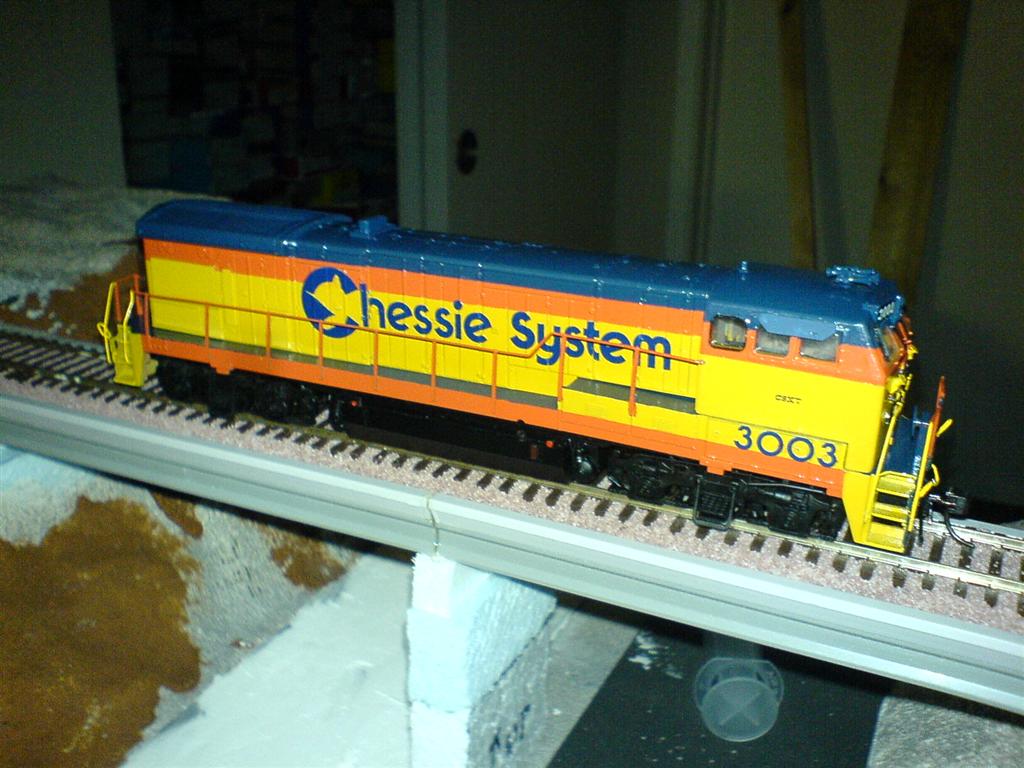
- Details
- Written by Josh Baakko
- Category: Painting Projects
- Hits: 2846
KCS Gray
What colors I used for a custom blended KCS Gray.
I recently painted a KCS SW1500. This required a custom mix of paint to match KCS's blue tinted gray paint. Here's what I chose.
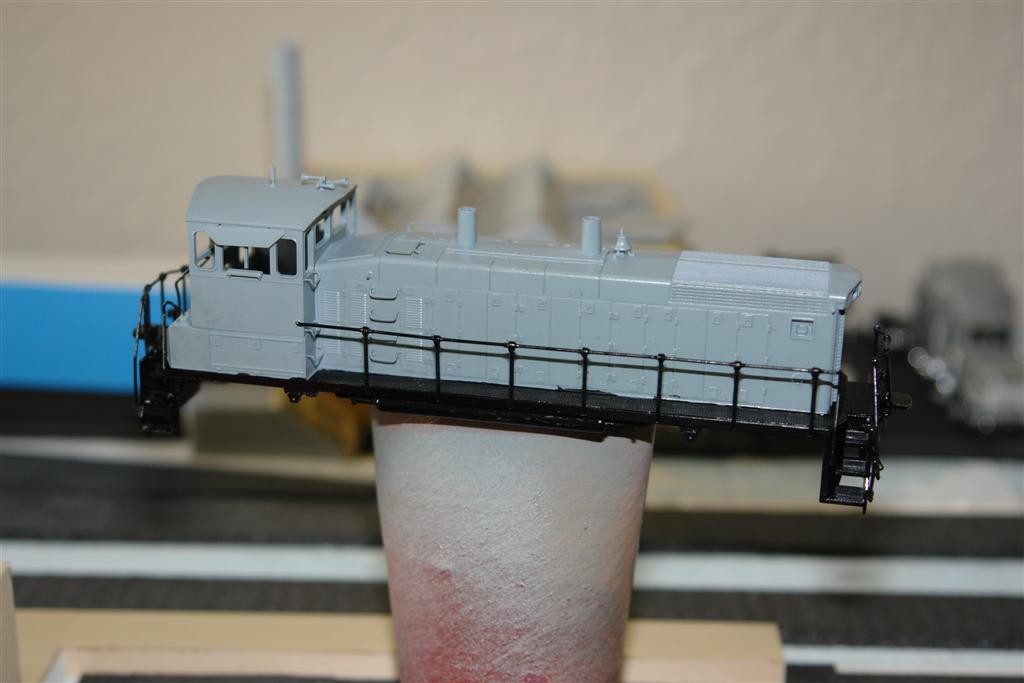
- Details
- Written by Josh Baakko
- Category: Painting Projects
- Hits: 6681
Modeling GECX 809
GECX 809, AKA the first ever GE wide cab locomotive (other than the BQ23-7).
This Demo unit spent time showing it's new "wide cab." This cab never made it to a production locomotive, but still exists as is! The paint scheme is quite complex, even though it does not look so.
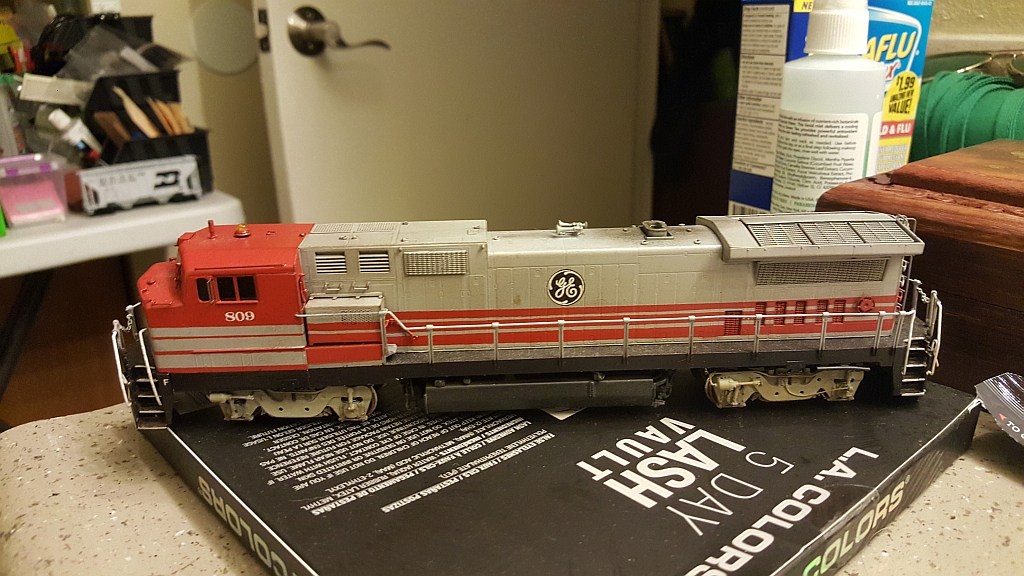
- Details
- Written by Josh Baakko
- Category: Painting Projects
- Hits: 2655
ICE & DME paint
Painting ICE & DME blue & yellow units
I chose to use a paint I used in some prior paint work for the blue. It is Model Master "French Blue". I used CSX yellow for the yellow, though plain Testors Yellow would also work well.
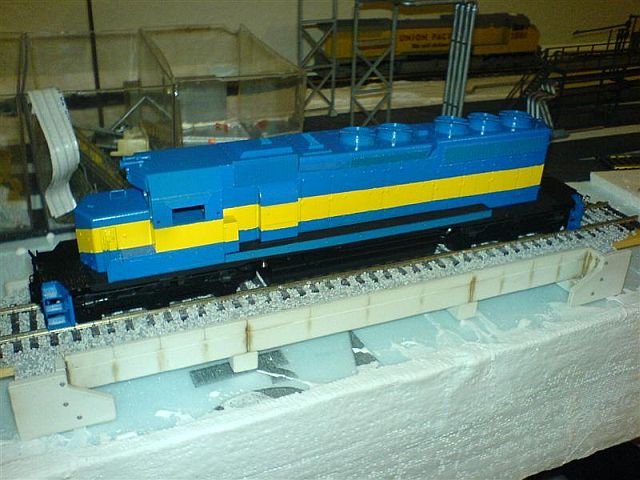
- Details
- Written by Josh Baakko
- Category: Painting Projects
- Hits: 2556
Stripping Factory Painted Models
From my prior paint removal efforts, a guide to what works (safely), on what models.
For anyone who models small railroads, has a free-lanced railroad, of just likes to paint. Stripping can be done for a number of reasons, Undecorated versions not available, decorated versions cheaper, ect...
Here's a list of whats worked for me.
- Details
- Written by Joe Napolitano
- Category: Painting Projects
- Hits: 3487
Painting to Achieve a Peeled Look
How to paint a locomotive to appear as though the previous owner's paint is starting to show through.
-Compiled by Josh Baakko, photos and model by Joe Napolitano (@_conrail_ on Instagram)
Recently Joe shared some photos of a D&H GP38-2 he modeled in HO scale. This particular unit was originally owned by Lehigh Valley, and was hastily repainted in the "blue dip" version of Delaware & Hudson's paint.
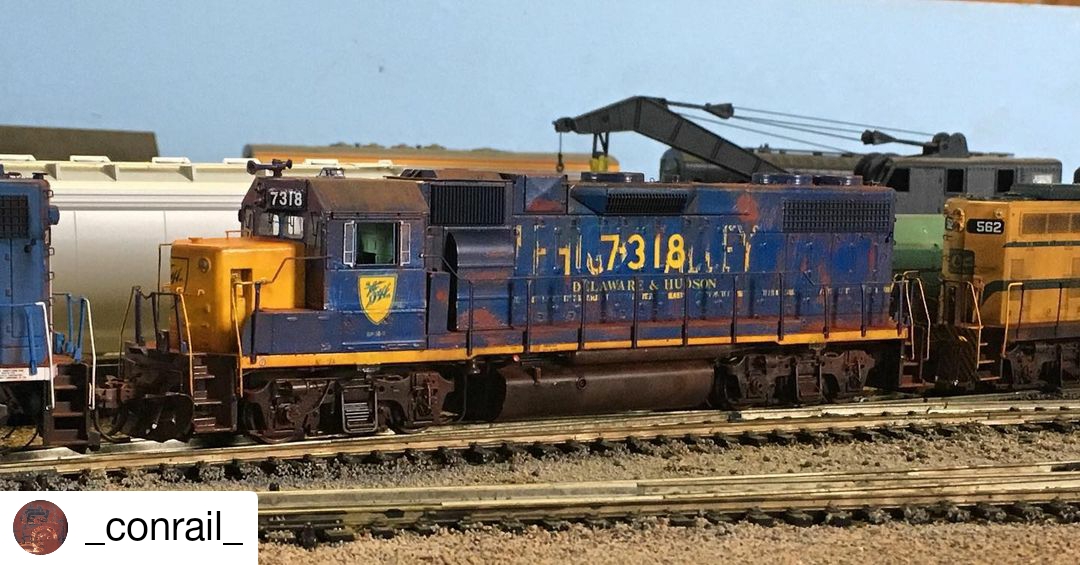
Through it's life with D&H the unit wore a few variations in paint. Joe chose to model the blue dip scheme, but after the paint had worn through exposing it's late Cornell Red. Joe's prototype can be found here: http://rrpicturearchives.net/showPicture.aspx?id=487182
Read on to see how he accomplished this unique paint.
- Details
- Written by Josh Baakko
- Category: Painting Projects
- Hits: 2640
CSX Gray
What Color I Used for CSX Gray
This BQ23-7 required CSX gray, and CSX blue. I did not see a "CSX Gray" at the LHS, so I picked up Model Master Navy Aggressor Gray, it seemed like the best match to me. CSX Blue was from Floquil. Decals are from Microscale.
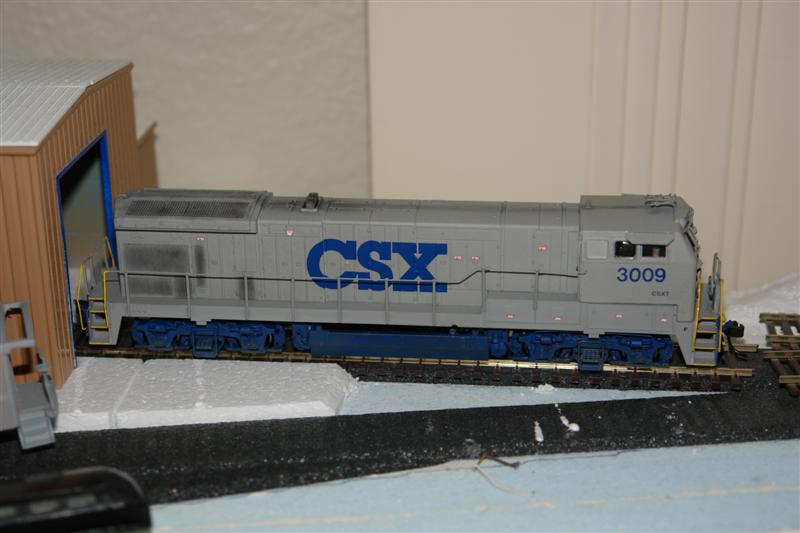
- Details
- Written by Josh Baakko
- Category: Painting Projects
- Hits: 3381
Stripping Paint from a Decorated Model (Version 1)
Using 91% Isopropyl Alcohol
Have you ever wanted to paint a locomotive, freight car, or other item, in your favorite, or custom paint scheme, but the cost or availability of undecorated models are interfering? Have no fear, you can easily remove paint from models without damaging the underlying plastic.
This article features a Life-Like Proto 2000 GP20, however this concept works equally as well with other Proto 200 models as well as Athearn. Kato requires a slightly stronger paint remover, which will be covered in future articles. Other manufacturers I don;t have much recent data with, so I cannot speak for them at the time of this article.
I prefer to use 91% Isopropyl Alcohol for most paint stripping as it dries fast after, and does not leave any trace residue. However as you can see in the photos, and a later article to come, Pine-Sol will also do the trick. Avoid the brake parts cleaner idea once toted by hobby magazines, as it can often attack the plastic. And definitely avoid spray, or brush on paint strippers from hardware stores, they will quickly turn your plastic model into goo.
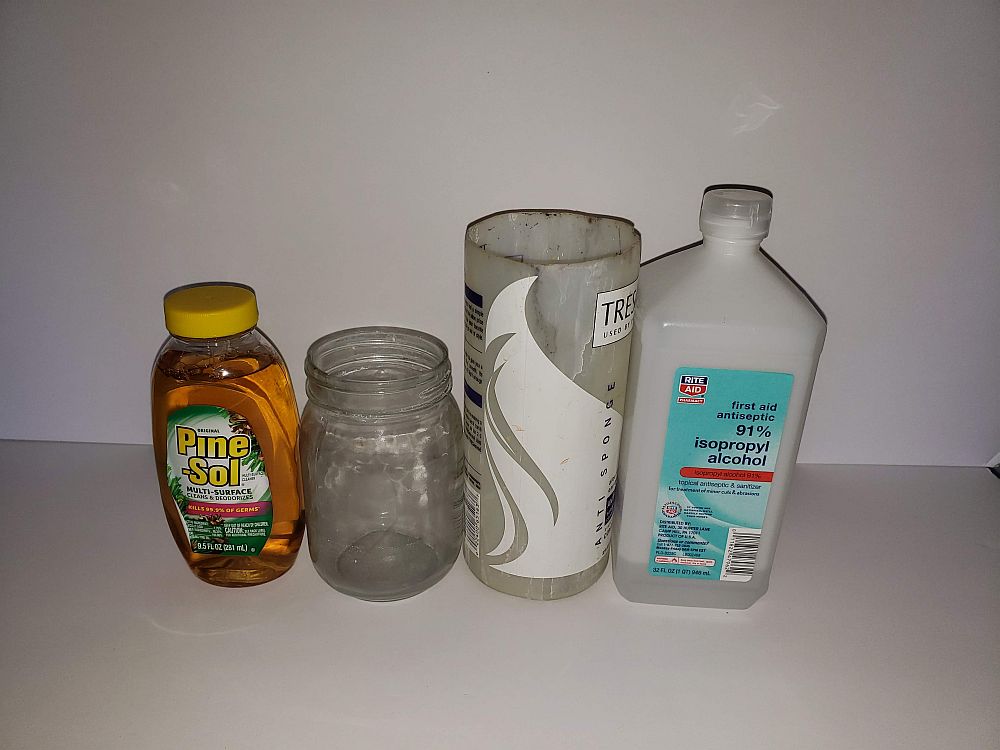
Read more: Stripping Paint from a Decorated Model (Version 1)

